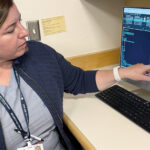Bone cancer surgery: A difficult choice
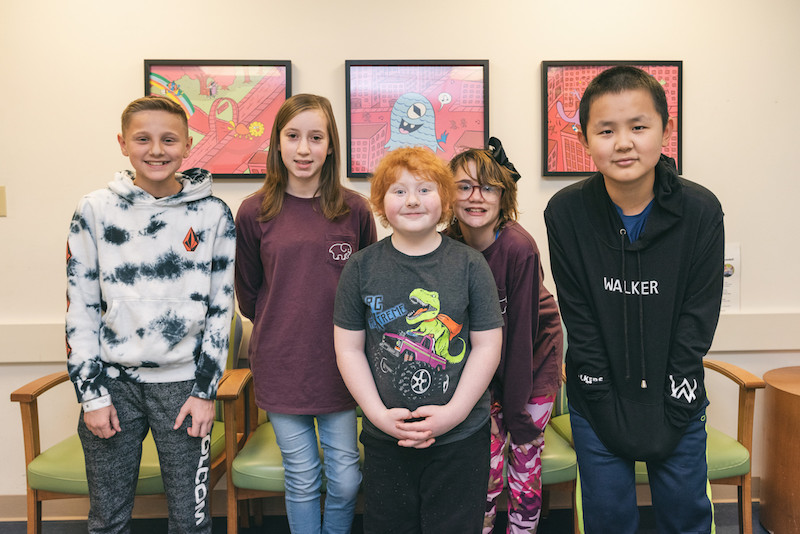
Nolan and Natasha might never have met if they hadn’t been diagnosed with bone cancer. Nolan, 13, is a natural athlete who lives in Maine. Natasha, 11, lives in Rhode Island and loves music and theater. As kids go, the two are pretty different — except for their osteosarcoma diagnoses and the surgery to remove it. Both kids now have expandable prostheses in their legs that will grow as they grow.
They met in person in January when they had their legs lengthened at the Dana-Farber/Boston Children’s Cancer and Blood Disorders Center.
Rare tumors, uncommon procedure
Dr. Megan Anderson is one of the few orthopedic surgeons in the country who performs limb-salvage and rotationplasty procedures for patients with osteosarcoma and Ewing sarcoma, another type of bone cancer. “These are rare tumors and the surgeries are quite specialized,” she says. Because of that, many patients travel from other states, even other countries, for surgery.
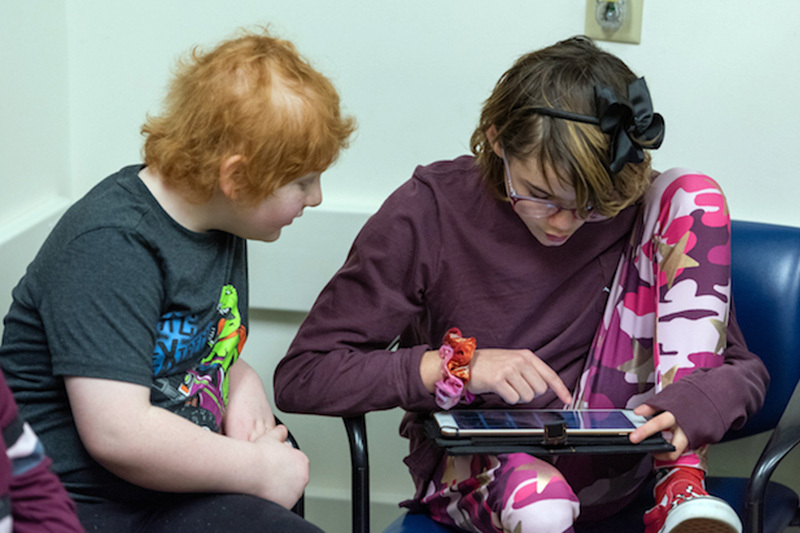
Like many of Dr. Anderson’s out-of-state patients, both Nolan and Natasha received chemotherapy at hospitals close to home: Nolan at The Barbara Bush Children’s Hospital in Scarborough and Natasha at Hasbro Children’s Hospital in Providence. As they adjusted to the first stage of treatment, both families had to make a life-defining choice.
Surgical options for bone cancer of the leg
Based on their ages, stages of growth, and location of their tumors, Nolan and Natasha had three surgical options:
- Amputation: removes all or part of the leg.
- Rotationplasty: removes and then reattaches the lower leg so the calf becomes the thigh and the ankle serves as the knee.
- Limb salvage surgery: replaces the cancerous bone with an implanted prosthesis or bone graft.
Growing children who choose limb salvage surgery can opt for an expandable prosthesis. A recent innovation, expandable prostheses contain motors that can be turned on with an external, high-strength magnet. The magnet slides a tube inside the prosthesis, thus “growing” as the child grows.
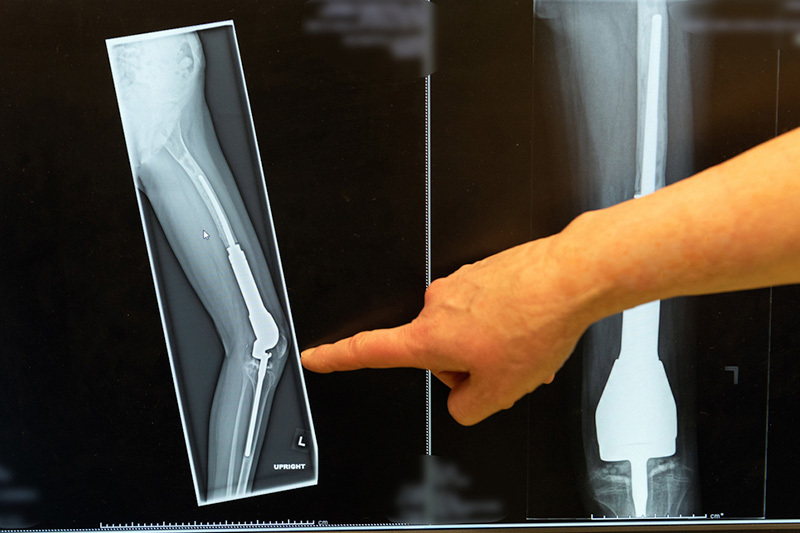
Limb-salvage surgery would allow Nolan and Natasha to keep their legs. As they grew, they would return to Boston Children’s to have the prostheses in their legs lengthened. However, the surgery would mean no longer being able to run or play high-impact sports.
The two other surgical options, rotationplasty or amputation, would remove part of their legs. They would eventually be able to do most of the things they’d done before with the help of a prosthetic leg. “People tend to steer away from rotationplasty and amputation because you lose a part of the body,” says Dr. Anderson. “But on the positive side, you don’t have to avoid high-impact activities and you don’t have to keep returning to the hospital for surgery as the limb salvage wears out.”
Helping families decide
Families generally have about 10 to 12 weeks to choose a surgical treatment. For such a big decision, the window can feel like almost no time at all. “The decision involves a lot of thought and planning,” says Dr. Anderson. “And so much of it depends on the personality of the child.”
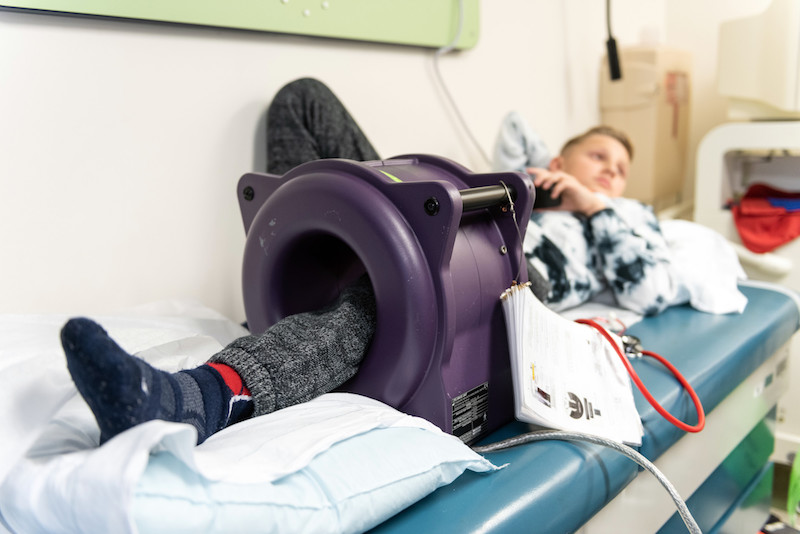
Dr. Anderson recommends that parents think about what activities their child enjoys, and what they may want to do in the future. A child whose identity is wrapped up in sports may be happier with rotationplasty or amputation. A child who can feel OK not playing high-impact sports may prefer limb salvage surgery.
Nolan’s choice
Nolan established a ground rule with his parents early on. “No secrets,” the 10-year-old told his parents. He wanted to be included in any conversation about his treatment. In response, once they were sure he understood all his options, Jason and Angela let Nolan decide. “We told him, this is your body. You’ll live with this decision for the rest of your life,” says Angela.
Though it would mean giving up hockey, Nolan chose limb-salvage surgery so he could keep his leg.
Natasha’s choice
Natasha’s great-grandmother, Marie, took responsibility for the decision. “She’d already been through so much,” says Marie, who adopted Natasha when she was 5-and-a-half. “I didn’t want to put her through rotationplasty on top of everything else.” Though she used to play soccer, Natasha didn’t seem particularly attached to the sport.
“I used to run around a lot. Now I need to be more careful,” says Natasha.
Living with a salvaged leg
Dr. Anderson understands that the options she presents to patients with bone cancer are far from perfect. “It’s OK to have second thoughts, but then work like heck to make what you have the best possible option for you. That’s what Nolan’s doing.”
Nolan chose not to have rotationplasty because he didn’t want his leg to look different. “Now I think it would have been pretty cool,” he says. “Your leg looks unique and you can do way more things.” Instead of traditional hockey, Nolan has played sled hockey for the past two seasons. Last year he also joined a swim team.
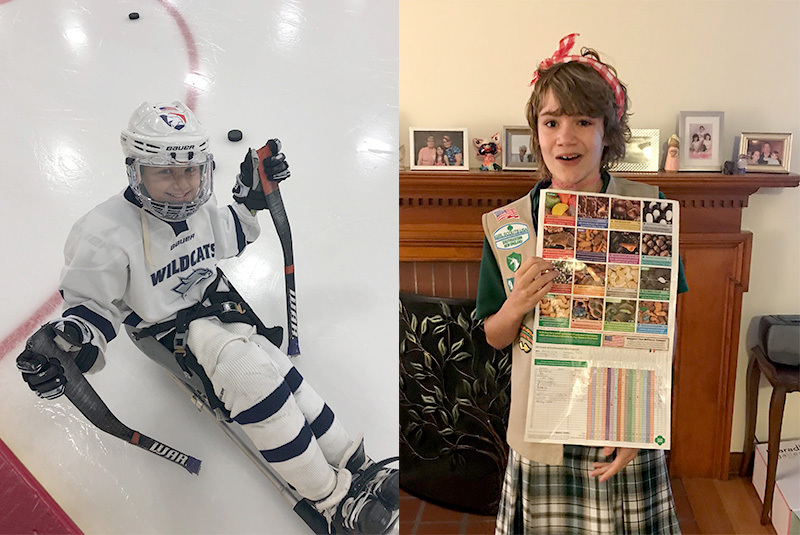
Natasha has always been happy with her choice. “You get to keep more of your leg,” she says. She has remained active in Girl Scouts. This spring, before the COVID-19 outbreak, she landed a role in Beauty and the Beast. Though her stage premier was cut short when schools shut down, she looks forward to trying out for future plays.
“No one wants to have to make a choice like this,” says Marie. Summing up how she’s coped, she adds, “Whatever you decide, you have to own it. You can only go forward.”
Legs growing longer
Nolan, Natasha, and three other kids who’d also chosen limb salvage surgery met at Dana-Farber/Boston Children’s in January to have their legs lengthened.
One by one, each kid took a turn putting their leg in a tunnel-like device while the others looked on. The machine made a whirring noise while magnets in the device caused the prostheses to expand about 5 millimeters, the width of the eraser on a pencil.
For Natasha, it felt like tingling. Nolan’s muscles felt tight for the last five minutes of the process. They both felt stiff the next day. They both worked through it — Nolan stretched, Natasha went roller skating — and went back to their lives.
Learn more about the Orthopedic Center and the Dana-Farber/Boston Children’s Cancer and Blood Disorders Center.
Related Posts :
-

Ask a sports medicine specialist: Why are ACL tears so common among female athletes?
When an athlete is sprinting after an opponent who suddenly stops or changes direction, their anterior cruciate ligaments (ACLs) make ...
-

Forging a path back to school after orthopedic trauma
Orthopedic trauma can force children to miss school, sometimes for an extended period. But even when patients have regained enough ...
-

A new druggable cancer target: RNA-binding proteins on the cell surface
In 2021, research led by Ryan Flynn, MD, PhD, and his mentor, Nobel laureate Carolyn Bertozzi, PhD, opened a new chapter ...
-

Jackie’s dreams of playing professional soccer back on track after ACL surgery
From her dorm in Newcastle, England, Jackie Zapata can hear fans roaring in the soccer stadium a few blocks away. ...


